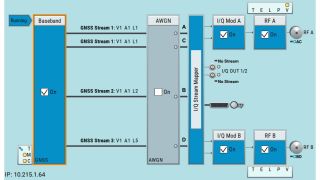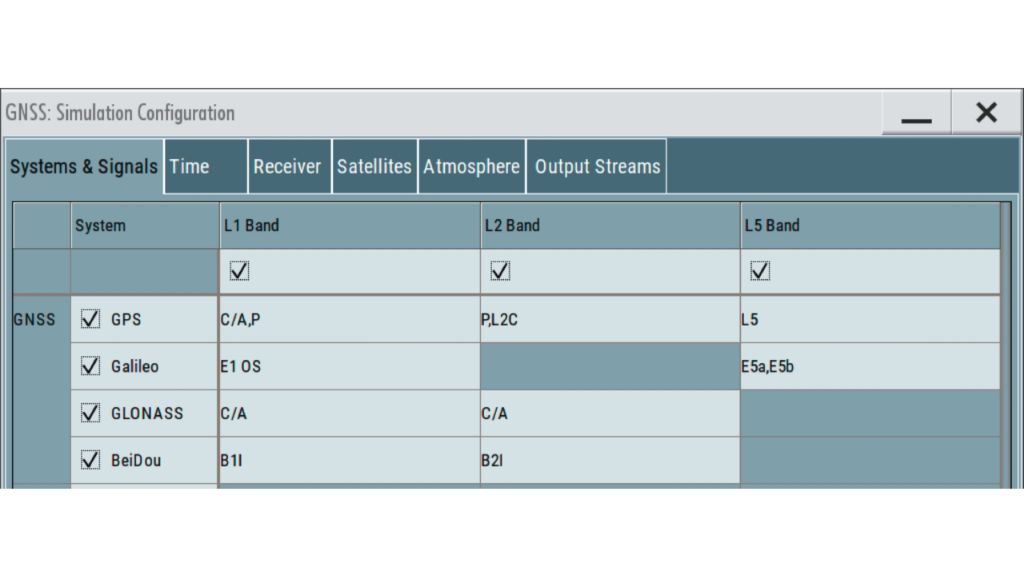Additionally, the signals of the visible satellites are not only received via line of sight (LOS), but are also reflected from nearby buildings or other obstacles. Obviously, the requirements on the receiver side increase with the evolution in GNSS constellations, and realistic simulations become more complex and computationally expensive.
Engineers developing new receivers capable of multi-constellation signal processing require a highly accurate and also versatile simulator to validate functionality and performance. The simulator needs to be able to provide signals for any combination of GNSS (e.g. GPS, Galileo, GLONASS or BeiDou) and frequencies as realistically as possible. Therefore, its channel budget has to be large enough to cover all visible SVs, the high number of positioning services (such as L1 C/A or E1 OS) and also the reflected echoes. Additionally, engineers must be able to take account of signal propagation characteristics, such as tropospheric and ionospheric effects, system characteristics, such as orbit and clock errors, and the user environment, e.g. shadowing or other impairments.











